Are you ready to start your own beginner’s garden and grow your own fresh produce right in your backyard? Starting a garden can be overwhelming, but with some basic gardening tips, you can be on your way to growing your own vegetables and fruits.
Choosing the right location for your garden is crucial. Find a spot that gets direct sunlight and has well-drained soil. Avoid areas that are prone to flooding or have a lot of foot traffic. It is also important to have nutrient-rich soil, so make sure to mix in organic matter to promote healthy root growth.
Starting small is always a good idea for beginners. Start with a garden size that you can manage, and only grow vegetables that you and your family enjoy eating. Choose easy vegetables that are suited to your area and mix in flowers such as marigolds to discourage pests and attract pollinators.
Understanding planting and growing requirements is essential for a successful garden. Pay attention to when and where to plant each vegetable, and follow a planting guide written for your specific area. Spend time in your garden each day to observe growth and address any problems early on.
Key Takeaways:
- Choose a sunny spot with well-drained soil for your garden.
- Start small and grow vegetables that you and your family enjoy eating.
- Use a planting guide to ensure proper timing for planting and harvesting.
- Spend time in your garden each day to observe growth and address any problems early on.
- Mix in flowers such as marigolds to discourage pests and attract pollinators.
Choosing the Right Location for Your Garden
When it comes to choosing the perfect spot for your starter garden, keep in mind that most vegetables thrive in areas with 6 to 8 hours of direct sunlight each day. A sunny spot is ideal, but leafy vegetables can tolerate partial shade. It is also important to choose a location with well-drained soil that is not too rocky, as rocks can interfere with root growth. Select a stable location that is not prone to strong winds or flooding, and consider adding organic matter to thin or nutrient-poor soil to ensure it is nutrient-rich.
If you are a beginner, it is best to start small. A 10′ x 10′ garden is manageable, and using a raised bed with a 4′ x 4′ or 4′ x 8′ size is suitable. Incorporate paths every four feet for easy access to plants. Select vegetables that you and your family enjoy eating, and keep your region’s climate in mind when choosing plants. Consider contacting your state’s Cooperative Extension Service to find out which plants grow best in your area.
Choose a convenient and visible location for your garden. A raised bed is a good starting point and allows for better soil control. Setting up a watering system, such as a soaker hose or drip line, is also recommended for efficient watering. Proper soil preparation is necessary, and a soil test can help determine the health and needs of your soil. If you have limited space or poor soil quality, container gardening is a viable option.
Grow vegetables and herbs that you love and are suited to your region. Purchase seeds and plants from reputable nurseries to ensure quality and variety. It is advisable to plant a combination of seeds and seedlings, especially for crops that require a longer growing season. Keep an eye out for pests and diseases and take action accordingly. Planting flowers alongside your vegetables can attract beneficial insects and pollinators.
Enjoy your garden and take pleasure in the daily discoveries it brings. Remember to start small and gradually expand your garden as you gain experience. With the right location, proper soil preparation, and suitable vegetables, your starter garden is sure to thrive.
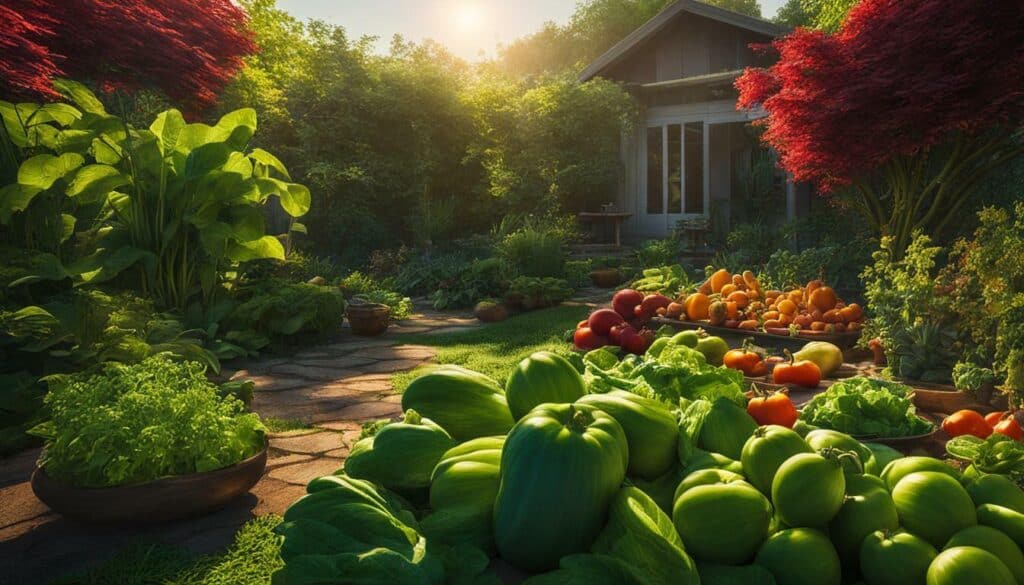
Preparing the Soil for Healthy Plant Growth
One of the key factors for a successful beginner’s garden is to ensure that your soil is nutrient-rich and well-prepared for planting. Nutrient-poor soil can lead to stunted growth and poor harvests, so taking the time to add organic matter to your soil is crucial for the growth of healthy plants.
Start by removing any rocks, sticks, or other debris from your garden plot or raised bed to create a space for your plants to grow. Adding compost, aged manure, or other organic matter to the soil will provide the necessary nutrients for healthy root growth and plant development. Organic matter also helps to retain moisture in the soil, reducing the need for frequent watering.
When preparing your soil, be sure to avoid compacting the soil by working it only when it is dry enough. Wet soil can lead to rotted roots and poor drainage, which can be detrimental to plant growth.
Once your soil is ready, consider starting with a small garden plot or raised bed. This will make it easier to manage and maintain, and will ensure easy access to plants for weeding and harvesting.
Before planting, choose the right vegetables and plant them according to the climate in your area. Opt for easy-to-grow varieties that you and your family enjoy. Plant a combination of seeds and seedlings to ensure a steady harvest throughout the growing season.
Lastly, regular watering is crucial for plant health. Consider using an automatic watering system or soaker hoses to ensure consistent moisture. And be sure to monitor your plants for any pest or disease problems and address them promptly.
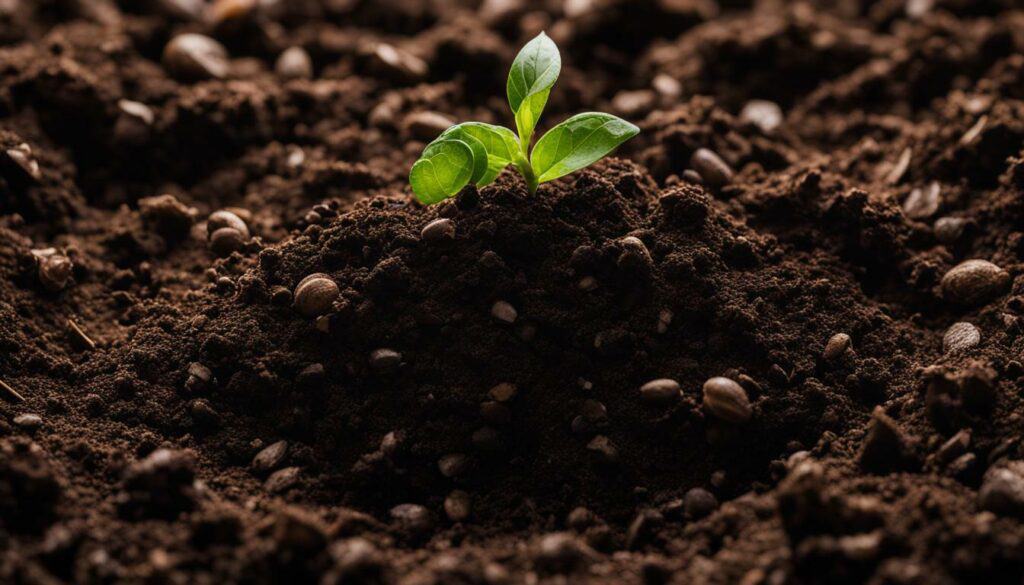
Planting flowers along with the vegetables can also be beneficial. Flowers attract pollinators and beneficial insects, aiding in pollination and pest control. Plus, they add beauty and color to your garden.
Remember to enjoy the process and take the time to appreciate the growth and beauty of your garden. Happy planting!
Starting Small and Choosing the Right Vegetables
It’s always best to start with a small garden when you’re just beginning your gardening journey, as it allows you to focus your efforts and avoid feeling overwhelmed. For a small garden, you can choose a 10′ x 10′ area or a 4′ x 4′ raised bed. Choosing the right vegetables is also crucial for success. As a beginner, it’s recommended to focus on easy-to-grow options like lettuce, green beans, radishes, tomatoes (by transplant), zucchini, peppers (by transplant), beets, carrots, chard, spinach, kale, and peas. These vegetables will provide a bountiful harvest without causing too much stress, as long as they are cared for properly.
It’s also important to choose vegetables that you and your family enjoy eating. There’s no point in growing a lot of a vegetable that no one likes, as it will only lead to wasted produce. Additionally, consider the availability of vegetables in your area. If you have easy access to certain vegetables at your local grocery store, it may not make sense to grow them in your garden. Instead, focus on vegetables that are harder to find or that taste better when they’re freshly picked.
Proper watering, soil preparation, and following a planting guide specific to your area are crucial for successful gardening. These practices will ensure that your vegetables have the right nutrients and are growing in the right conditions. Additionally, taking time to observe your garden daily and addressing potential problems promptly will ensure that any issues are addressed before they can become major problems. Incorporating flowers into your garden can also help attract beneficial insects that will aid in pollination and pest control.
The joy of gardening comes not just from the end result of growing and harvesting your own delicious vegetables but also from the daily discoveries along the way. With a small garden and the right vegetables, you can experience the satisfaction of watching your hard work pay off as your plants grow and thrive.
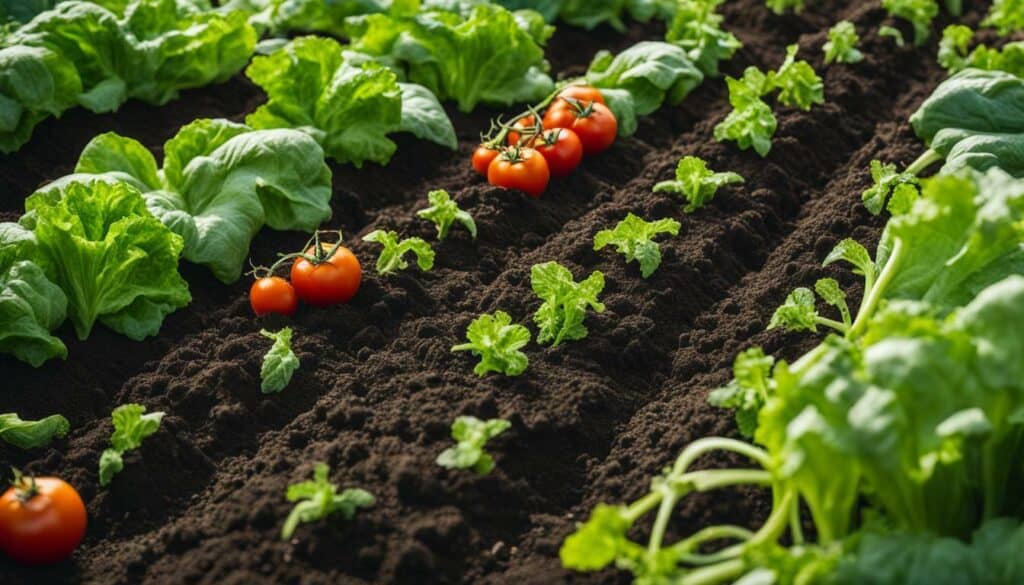
In the next section, we’ll take a closer look at the planting and growing requirements for your beginner’s garden.
Understanding Planting and Growing Requirements
As a beginner gardener, it’s essential to understand the specific planting and growing requirements of each vegetable you choose to cultivate. Choosing the right location is crucial, as most vegetables need 6 to 8 hours of direct sunlight per day and well-draining soil. It is also important to start small and only grow what you and your family will eat. A 10′ x 10′ garden (or a 4′ x 4′ raised bed) is a manageable size for beginners.
When selecting vegetables, choose easy-to-grow ones that you enjoy eating. Consider the availability of vegetables at your grocery store and be prepared to take care of your plants throughout the growing season. It’s important to use high-quality seeds and to follow a planting guide specific to your area, especially for cool-season crops that can tolerate the climate.
Care and maintenance are essential for successful gardening. Spend time in the garden each day, observing and tending to your plants. Regular watering and weeding are important for the health of your garden. Be on the lookout for pests and diseases, and address any issues promptly to ensure healthy plant growth.
Harvesting and enjoying the fruits of your labor is a rewarding experience. Pick produce when it’s ripe and incorporate your homegrown vegetables into your meals. Experiment with new recipes and savor the taste of your fresh, organic produce.
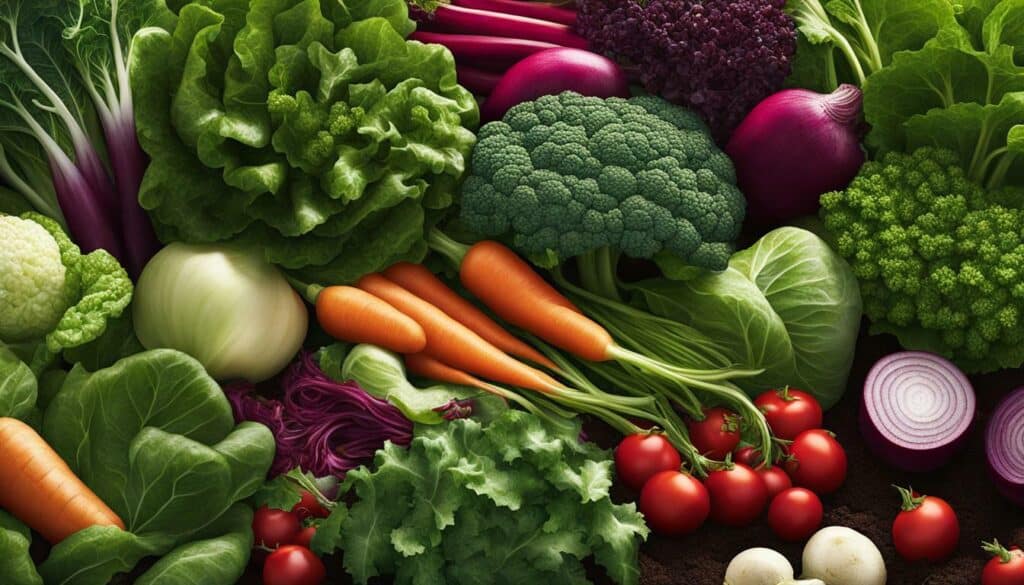
“The love of gardening is a seed once sown that never dies.” – Gertrude Jekyll
Daily Observation and Troubleshooting
Your garden requires regular attention and care, so it’s important to spend time in it each day, observing the growth of your plants and addressing any problems that may arise. By doing so, you’ll catch any issues early, saving you time and effort in the long run.
Pest control is essential to maintaining your garden’s health. Regularly inspect your plants for signs of insect damage, such as holes in leaves or wilted foliage. If you do spot pests, remove them by hand or treat them with an appropriate insecticide. Be sure to read and follow the instructions on any chemical products carefully.
Disease prevention is equally important. Keep an eye out for signs of disease, such as black spots on leaves or mold on stems. If you notice any issues, remove any affected plant material and dispose of it properly. Be sure to clean your tools and disinfect them regularly to avoid spreading disease throughout your garden.
Regular watering is also vital to your garden’s success. You should aim to keep the soil consistently moist but not waterlogged. A drip irrigation system or soaker hose is an efficient way to deliver water directly to the roots of your plants.
Make sure to add the appropriate type and amount of soil to your raised bed or containers to ensure proper growth and drainage. Following a specific planting guide for your area will ensure that your vegetables are planted at the right time for optimal growth.
Finally, don’t forget to enjoy the harvest of your efforts! Incorporate your homegrown produce into your meals and try out new recipes to fully appreciate the fruits of your labor.
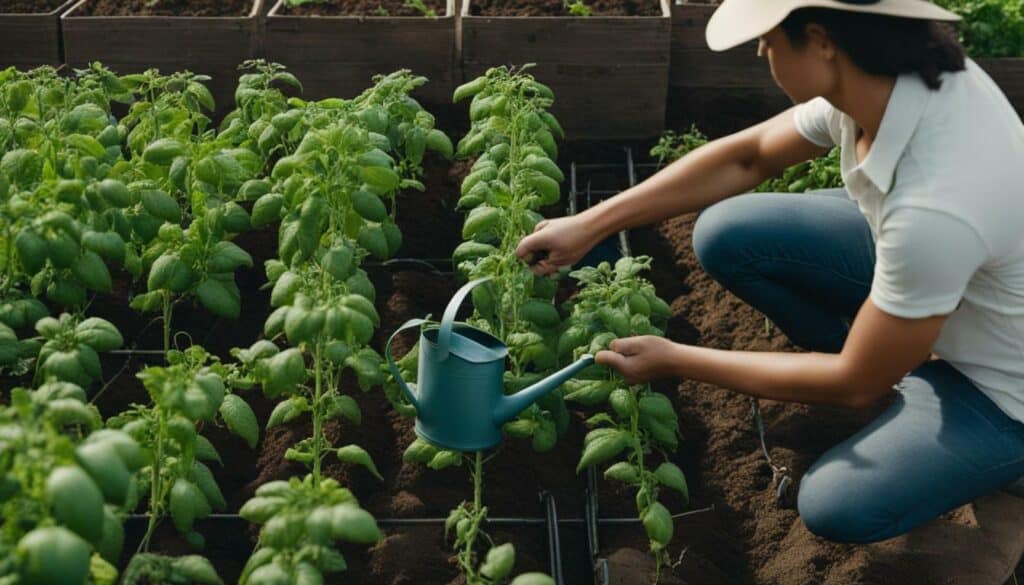
Harvesting and Enjoying Your Homegrown Produce
The ultimate reward of your beginner’s garden is the ability to harvest and enjoy the fruits of your labor, creating delicious meals with your own homegrown vegetables. Picking produce straight from your garden not only tastes better than store-bought options but also provides a sense of pride and satisfaction.
When it comes to harvesting, it’s essential to pick vegetables when they are at their peak ripeness. Consult your planting guide for specific instructions on when to harvest your vegetables, as it can vary by type. Some vegetables, like tomatoes, should be picked when they are fully colored and slightly soft to the touch. Others, like lettuce and spinach, should be picked when their leaves are young and tender for the best flavor.
It’s also important not to let your vegetables go to waste. Harvest only what you need and use them in your meals as soon as possible. Incorporating homegrown vegetables into your diet is an excellent way to reap the nutritional benefits of fresh produce and experiment with new recipes.
Get creative with how you use your homegrown produce in the kitchen. Try making a refreshing summer salad with freshly picked lettuce and tomatoes or roasting up a batch of crispy oven-baked sweet potato fries. There are endless possibilities when it comes to incorporating garden-fresh veggies into your meals, so don’t be afraid to experiment and have fun with it!
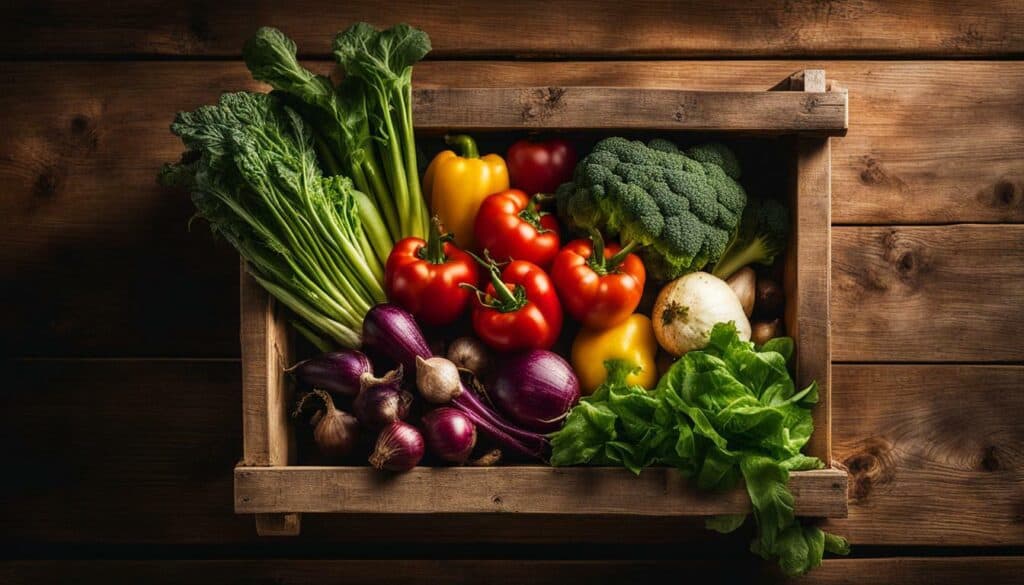
Harvesting and enjoying your homegrown produce is a fulfilling experience that allows you to truly appreciate the hard work and dedication that goes into gardening. By following the tips outlined in this article, you can get one step closer to creating delicious and nutritious meals with your very own homegrown vegetables.
Enhancing Your Garden with Flowers for Pollination and Pest Control
Did you know that planting flowers alongside your vegetables can not only enhance the beauty of your garden but also attract important pollinators and beneficial insects? Flowers such as marigolds can discourage pests, while also adding color to your garden.
When choosing a location for your garden, it’s essential to pick a sunny spot that receives 6 to 8 hours of direct sunlight per day. Good drainage is also crucial to prevent water pooling, which can lead to rotted roots. Planting in a stable and not windy location is important to protect young plants and allow pollinators to do their job.
In addition to a favorable location, selecting nutrient-rich soil and adding organic matter can help your plants grow strong and healthy. This will promote root growth and lead to productive plants. When starting a garden, it’s better to start small and only grow what you and your family will eat. Choosing easy vegetables that are also productive, such as lettuce, green beans, and tomatoes, is recommended.
It’s important to provide the right amount of water to your garden, and setting up an automatic watering system can help. Adding soil to your raised bed and regularly amending it with organic fertilizer is essential for healthy plant growth. Following a planting guide specific to your area can help you determine the ideal planting times for your vegetables.
Spending time in your garden each day allows you to observe the growth, address any issues, and enjoy the satisfaction of growing your own food. Harvesting the vegetables you grow and incorporating them into your meals is a rewarding experience. When starting a garden, it’s important to start small, choose reliable sources for seeds and plants, and plant a combination of seeds and seedlings.
Keeping an eye out for potential problems and planting flowers alongside your vegetables can assist with pollination and pest control. Pollinators such as bees and butterflies are attracted to flowers, and beneficial insects such as ladybugs and lacewings can help control pests. Adding flowers such as marigolds and calendula can provide a natural repellent for common garden pests.
Finally, the most important aspect is to enjoy your garden and appreciate the beauty of nature. Enhancing your garden with flowers not only adds visual appeal, but also assists in pollination and pest control. So go ahead and add some color to your garden with beautiful flowers!
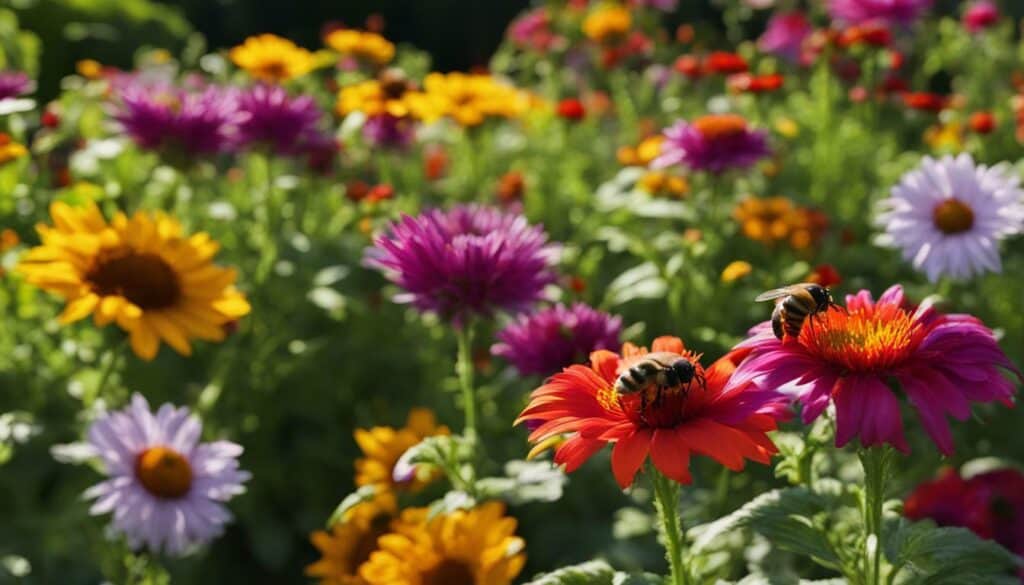
Finding Peace and Connection in Your Garden
Gardening isn’t just about growing plants; it’s a process that allows you to connect with nature and find a sense of peace and tranquility in your own backyard. By following a few simple steps, you can enhance the gardening process and deepen your connection with nature.
Start by choosing a sunny spot in your yard that is convenient for you to enjoy and maintain regularly. Consider adding a raised bed to maximize space and simplify access. A watering system will ensure your plants receive adequate moisture, and conducting a soil test will determine if any amendments are needed.
Remember to start small and choose vegetables and herbs that you love to eat. Purchase seeds and plants from reliable nurseries and plant a combination of seeds and seedlings, considering the length of your growing season. Keep an eye out for any problems or pests and address them promptly.
For pollination and pest control, consider planting flowers alongside your vegetables to attract pollinators and beneficial insects. This will aid in the growth and health of your plants.
Finally, take daily walks among your garden to observe the progress and find peace in the beauty of nature. Incorporate your homegrown vegetables into new recipes and share the fruit of your labor with friends and family. Gardening is more than just growing plants; it’s a journey that allows you to connect with the world around you and find peace within yourself.
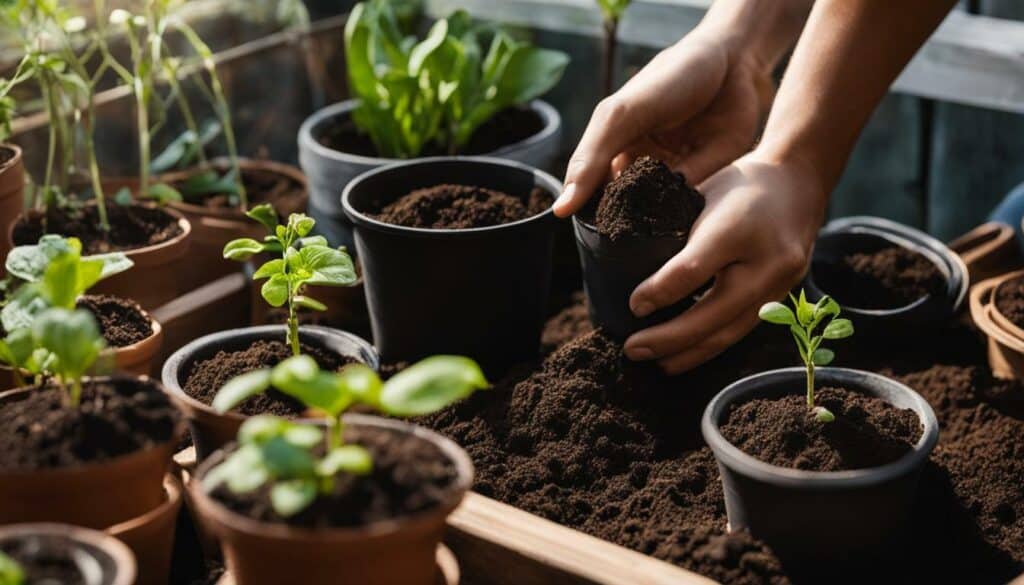
“Everything that slows us down and forces patience, everything that sets us back into the slow circles of nature, is a help. Gardening is an instrument of grace.” – May Sarton
Conclusion
Congratulations on taking the first step towards growing your own starter garden! By following these tips and techniques, you’ll be well on your way to cultivating a lush and bountiful garden right in your own backyard.
Remember to choose the right location for your garden, prepare nutrient-rich soil, and start small with vegetables you enjoy. Understanding the care and maintenance requirements of your plants is crucial, as is daily observation and troubleshooting to prevent pest and disease issues. Don’t forget the joy of harvesting your homegrown produce and incorporating it into new recipes.
Enhancing your garden with flowers for pollination and pest control can also contribute to a successful harvest. And beyond the tangible benefits, gardening can provide a sense of peace and connection to nature.
So, what are you waiting for? Grab your gardening gloves and start growing your own starter garden today!
FAQ
Q: Where should I plant my garden?
A: Choose a sunny spot for your garden, as most vegetables need 6 to 8 hours of direct sunlight per day.
Q: How can I ensure proper soil drainage?
A: Ensure that the soil drains well and doesn’t stay wet, as wet soil can lead to rotted roots. Remove rocks from rocky soil to promote root growth.
Q: What should I consider when selecting a location for my garden?
A: Avoid planting in windy areas or places with excessive foot traffic. Find a location that is stable and not too exposed to strong winds.
Q: How can I prepare nutrient-rich soil for my plants?
A: Prepare nutrient-rich soil by adding organic matter to promote healthy plant growth.
Q: How many vegetables should I start with?
A: Start with a small garden, planting 3 to 5 of your favorite vegetables. Avoid planting too much too soon, as it can be overwhelming and result in wasted produce.
Q: What type of vegetables should I choose?
A: Consider the availability of vegetables at your grocery store and choose varieties that are not readily available.
Q: What if I will be away during the growing season?
A: If you will be away during the growing season, choose cool-season crops that can tolerate the cooler months of spring and fall.
Q: How can I ensure proper germination of seeds?
A: Use high-quality seeds and make sure they germinate properly to avoid wasting time and money.
Q: Is there a specific timing for planting each vegetable?
A: Plant vegetables according to their specific planting and growing requirements. Follow a planting guide for your area to determine the ideal timing for each vegetable.
Q: How often should I check my garden for problems?
A: Spend time in your garden each day, observing the growth and checking for any problems such as pests or diseases. Address any issues promptly to ensure healthy plant growth.
Q: When should I harvest my vegetables?
A: Harvest and enjoy the fruits of your labor by picking young and often to encourage more production. Incorporate your homegrown vegetables into your meals and explore new recipes to make the most of your garden.
Q: Should I plant flowers in my garden?
A: Consider planting flowers alongside your vegetables to attract pollinators and beneficial insects. This can help with pollination and pest control in your garden.
Q: What are the emotional benefits of gardening?
A: Enjoy the process of gardening and take the opportunity to connect with nature and find peace in your garden.
What are Some Expert Gardening Tips for Beginners to Help Them Grow Their Own Garden Successfully?
Are you new to gardening and eager to grow a better garden with expert tips? Start by choosing the right location for your garden, ensuring it receives ample sunlight. Prepare the soil by removing weeds and adding organic matter. Select easy-to-grow plants suitable for your region and follow proper watering and fertilization practices. Remember to provide adequate space between plants and regularly monitor for pests and diseases.
Source Links
- https://www.almanac.com/vegetable-gardening-for-beginners
- https://growinginthegarden.com/gardening-for-beginners-how-to-start-a-garden-in-8-simple-steps/
- https://www.countryliving.com/gardening/garden-ideas/g43413616/vegetable-garden-for-beginners/
- https://growitbuildit.com/14-factors-to-choose-your-vegetable-garden-location/
- https://www.gardensthatmatter.com/choose-garden-location/
- https://www.almanac.com/where-put-vegetable-garden
- https://www.almanac.com/soil-preparation-how-do-you-prepare-garden-soil-planting
- https://www.southernliving.com/garden/how-to-prepare-garden-soil-for-planting
- https://www.planetnatural.com/garden-soil/
- https://www.bhg.com/gardening/vegetable/vegetables/planning-your-first-vegetable-garden/
- https://www.firstdayofhome.com/vegetable-gardening-for-beginners/
- https://www.gardeners.com/how-to/vegetable-gardening/5069.html
- https://www.growingwithnature.org/observe-your-garden/
- https://miniurbanfarm.com/daily-and-weekly-garden-chores/
- https://extension.umn.edu/planting-and-growing-guides/harvesting-and-storing-home-garden-vegetables
- https://www.homedepot.com/c/ai/how-to-grow-harvest-and-enjoy-your-vegetable-garden/9ba683603be9fa5395fab9016f824ff3
- https://kellogggarden.com/blog/honeybees-and-butterflies/companion-planting-to-attract-pollinators/
- https://www.almanac.com/building-pollinator-garden
- https://www.thespruce.com/flowers-for-the-vegetable-garden-1403383
- https://www.carolinacountry.com/departments/departments/feature-story/finding-peace-in-plants
- https://blogs.ifas.ufl.edu/manateeco/2020/04/02/finding-peace-in-gardening-part-1-of-a-series/
- https://rockledgegardens.com/green-gardening-for-inner-peace/
- http://lizfabry.blogspot.com/2012/11/garden-update.html?m=1
- https://growingourown.wordpress.com/6-conclusion/
- https://www.bhg.com/gardening/yard/garden-care/ten-steps-to-beginning-a-garden/

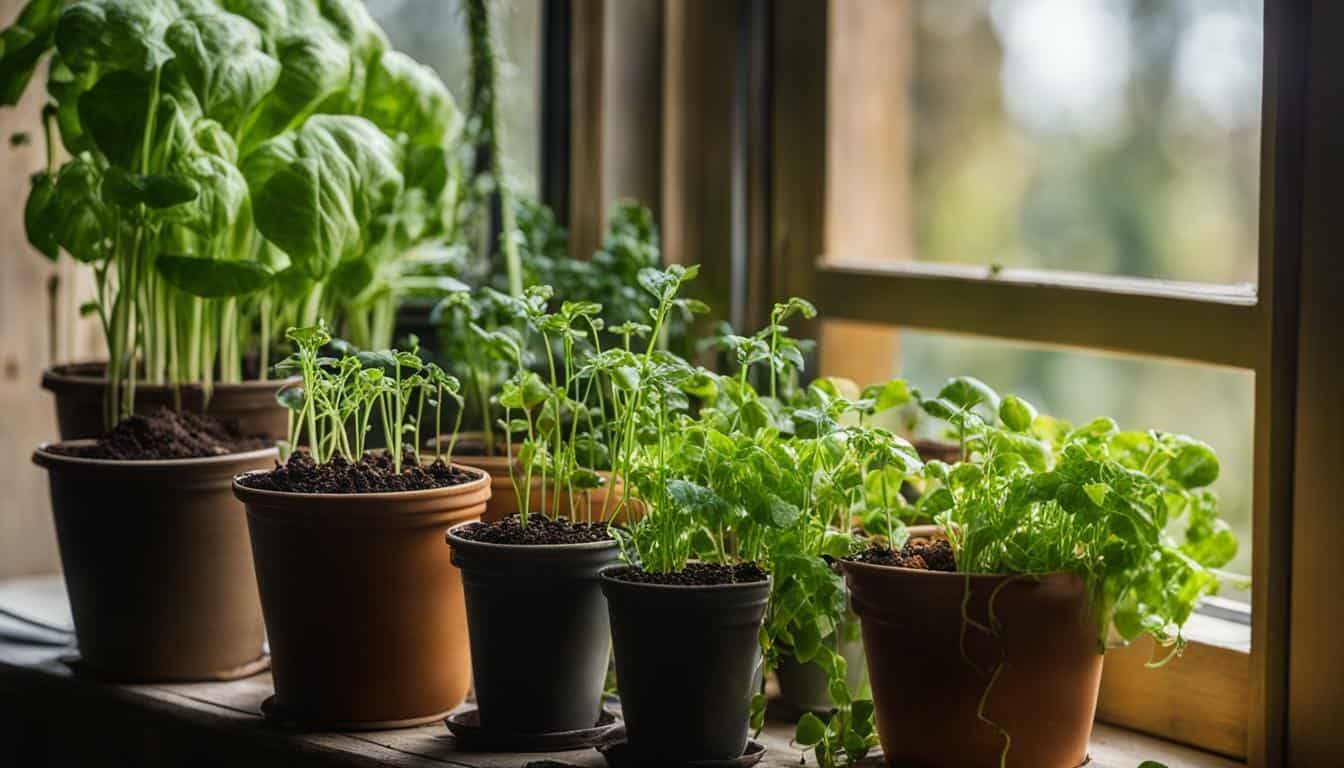



Leave a Reply